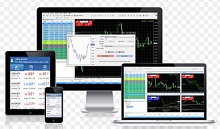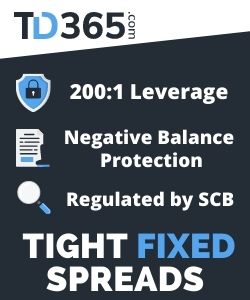A Simple Guide To Trading CFDs For Beginners
To those unfamiliar with CFD trading, starting out can appear daunting and intimidating. But it doesn’t need to be that way. With the right learning and development, beginners can soon become experts – but let’s start with the basics!
What is a CFD?
The acronym ‘CFD’ stands for Contract For Difference and is a common term used in online derivative trading. Put simply, a contract for difference is a contract between a broker and a client to exchange the difference between the current value of a financial asset and its value at sale time (when the CFD expires).
If you trade CFDs, you are speculating on the price movement of a financial instrument, like an index such as the Wall St 30, a stock like Google, a commodity like Gold, a currency such as EUR/USD, plus thousands of other financial markets.
on the price movement of a financial instrument, like an index such as the Wall St 30, a stock like Google, a commodity like Gold, a currency such as EUR/USD, plus thousands of other financial markets.
Trading CFDs allows you to make a profit or loss when you speculate on the price movement of a financial asset.
For example, you might open a BUY trade on the Australian 200 Index when it is valued at 7,000. If the value goes up to, say 7,120, you will make a profit on that trade (as the Index has risen in value). If you had made a SELL trade using the same example, you would make a loss as the value of the Aussie 200 has increased, rather than declined as you had speculated.
The Advantages of Trading CFDs
 Leverage
Leverage
CFDs are a leveraged trading product – this means you only need to deposit a small fraction of the trades’ full value in order to open a trade. This is also known as the margin requirement or deposit multiple. Say you want to trade the ASX 200 Index which at the time is priced at 6,000. Rather than having to deposit $6,000 onto your trading account to open a position, you’d only need to deposit c., $300 (5% margin requirement) onto your account.
Trading using leverage can help magnify your trading profit but, equally, it can also magnify your losses. Increased leverage can result in even larger losses so please understand leverage before you begin CFD trading. More on Leverage here.
 Access global markets from one trade platform
Access global markets from one trade platform
The trading options are endless when you trade CFDs, with many brokers offering access to all the  world’s major financial markets – local and international stocks, currencies, commodities, indices, plus more. This means you can access any market around the world (while its open on an exchange) – all from one trading platform.
world’s major financial markets – local and international stocks, currencies, commodities, indices, plus more. This means you can access any market around the world (while its open on an exchange) – all from one trading platform.
 Profit in both rising and falling markets
Profit in both rising and falling markets
With CFDs, you can enter BUY trades and SELL trades; that is, you can speculate on both rising and falling markets. So, if you think the price of Gold is going to go down, then you can make a SELL trade to reflect your thoughts. If the price of Gold does go down, you will make a profit on that trade. This is very unlike traditional stock trading where you buy a stock in hope it will increase in value, not decrease.
 No stamp duty on CFD profits
No stamp duty on CFD profits
You do not have to pay stamp duty on any trading profits and you can also offset any trading losses against future profits as a tax deduction.
 No underlying asset ownership
No underlying asset ownership
As CFDs are a contract, traders do not need to own the underlying asset so there is no risk of having to take possession of the underlying share, commodity or index.
How Do CFDs Work?
 When you trade CFDs, you are not buying or selling the underlying asset like a bunch of shares in a company or a bar of gold. Instead, you are merely speculating (trading) on the price movement of that financial asset.
When you trade CFDs, you are not buying or selling the underlying asset like a bunch of shares in a company or a bar of gold. Instead, you are merely speculating (trading) on the price movement of that financial asset.
You can trade on thousands of global markets and you either BUY (‘Go Long‘) or SELL (‘Go Short‘) depending on whether you think the price of an instrument will go up or down. If the market moves in your favour, you will make a profit. If the market goes the opposite way, you will make a loss.
CFD Trading For Beginners – Example
- You believe that the share price of CBA (CommBank) is going to rise in the coming weeks and you wish to capitalise on this thought
- You have two options; (1) buy the actual stock for c., $70 per share or (2) trade it using CFDs by opening an account with a CFD broker
- With option 1 you will need to cough up $7,000 to cover the full cost of the 100 shares (x $70) and you will own these shares once bought
- With option 2, using a CFD broker, you will only need to deposit 5% of the full value of the shares ($350) in order to trade it; a significantly smaller amount of cash outlay. This is because CFD trading is a leveraged product
- For every cent that the value of CBA rises, you will gain multiples of the number of units you have bought. For every cent the price moves against you, you will make a loss.
Which CFD Broker Should I Trade With?
There are many CFD brokers to choose from – we have listed 3 leading, Regulated CFD brokers;
The Risks of Trading CFDs
CFD Trading For Beginners – please read this!
Trading in leveraged financial products such as CFDs and FX carries various risks, requires a certain level of experience and may not be suitable for all investors. Trading in leveraged products may result in losses that exceed your initial deposit/s.
Please seek expert advice and always ensure that you fully understand these risks before trading. If you are considering opening an online trading account, operating in the CFD market or acquiring any financial instrument/product, you should obtain and read the relevant Product Disclosure Statement and/or other offer document/s prior to making any financial decision.
How Much Does It Cost To Trade CFDs?
Spread costs
The spread is the difference between the buy and sell price, and is the most common charge a broker will apply when you open a trade. The tighter or narrower the spread, the less a broker is charging you to open a trade. The wider the spread, the more a broker is charging you to trade. Please research the spreads of each broker before committing to one – again, the tighter the spread, the better. Find out more about spreads here.
Exchange data fees
To view the price data for an equity, you may need to subscribe to the relevant exchange. Some brokers will not charge you if you trade with them each month but please research the potential costs of data feeds as they vary per broker.
Commissions
Commission charges usually only apply to stock CFDs but please check with your broker of choice as they may apply commissions to other markets. Commission charges on stock CFDs are usually represented as a %, i.e. 0.07% or a set fee, i.e. $7 per trade.
Overnight financing costs
If you keep a trade open overnight, you will be subject to a small fee in order to keep that trade open. The holding cost can be positive or negative depending on whether you are LONG or SHORT on your trade.
How Can You Compare CFD Trading Platform Providers?
Each CFD provider has a different trading platform and you will need to decide which features are important to you before committing to one platform. Here are a couple of important considerations;
 Fees and trading costs
Fees and trading costs
To trade on a broker’s trading platform, there will be some trading costs involved and this is completely normal. There will be a spread charge for every trade that is opened and these will vary between brokers. Further to this, there may be commission charges, exchange & research fees and also holding costs for positions held open overnight. Please make sure you’re aware of each trading cost a broker will apply to your account.
 Margin requirements
Margin requirements
Before you can open a trade on your CFD account you will need to deposit funds onto your account. This is known as the margin requirement and is the % of the total value of a trade. For instance, the Australian 200 Index might have a margin requirement of 1%. If the value of the ASX 200 is 7,000, you would need to have $70 on your account. Margin requirements vary between brokers.
 Trading platform ease of use
Trading platform ease of use
You need to find a trading platform that is simple, easy-to-use and one that you are completely comfortable with. We’d recommend opening a couple of demo accounts with a few different brokers. Then you can choose which one you prefer the most and open a live account.
 Can you trade on the go?
Can you trade on the go?
Most brokers will offer a standard web-based or downloadable trading platform. But you will also be able to open trades and/or amend orders via your iPhone or tablet using an App.
 Regulation and reputation
Regulation and reputation
Trading with a regulated CFD broker has many advantages. Most notably that brokers will be closely monitored by the countries’ governing regulator. Tier-one require that all brokers work within a strict framework, ensuring a business is run in accordance with local laws and regulations.
CFD Trading Example: going short
‘Going short’ is when you open a SELL trade in the hope that a financial asset will decline in value.
John believes that the Bank of Queensland (BOQ) will release lower profit figures than expected. And that this will result in their share price declining. He places a SELL order for 5,000 BOQ shares at the current market price of $10. The margin rate on BOQ is 5% so he places $2,500 onto his trading account as margin and opens the SELL trade.
3 weeks later, the share price of BOQ has fallen to $9.40. John was correct in his thinking that BOQ would fall in value and decides to close the trade. He makes a profit. He closes the trade at $9.40 and makes a $3,000 profit (before overnight financing charges and commission charges).
Profit: $5,000 shares x $0.60 price movement = $3,000.
CFD Trading For Beginners Example: going long
‘Going long’ is when you open a BUY trade in the hope that a financial asset will increase in value.
Sarah thinks that the UK100 index is going to rise in value. She places a $5 per point BUY trade when the UK100 index hits 5,800. The margin rate is 0.5% so she will need to place $145 onto her trading account.
Three days later the UK100 has risen to 5,920. Sarah was correct in her thinking that the market would rise in value. She closes the trade at 5,920 – an increase of 120 points on the index. Her profit on this trade (less spread costs and overnight financing) would be $600.
Profit: 120 point movement x $5 per point trade = $600.